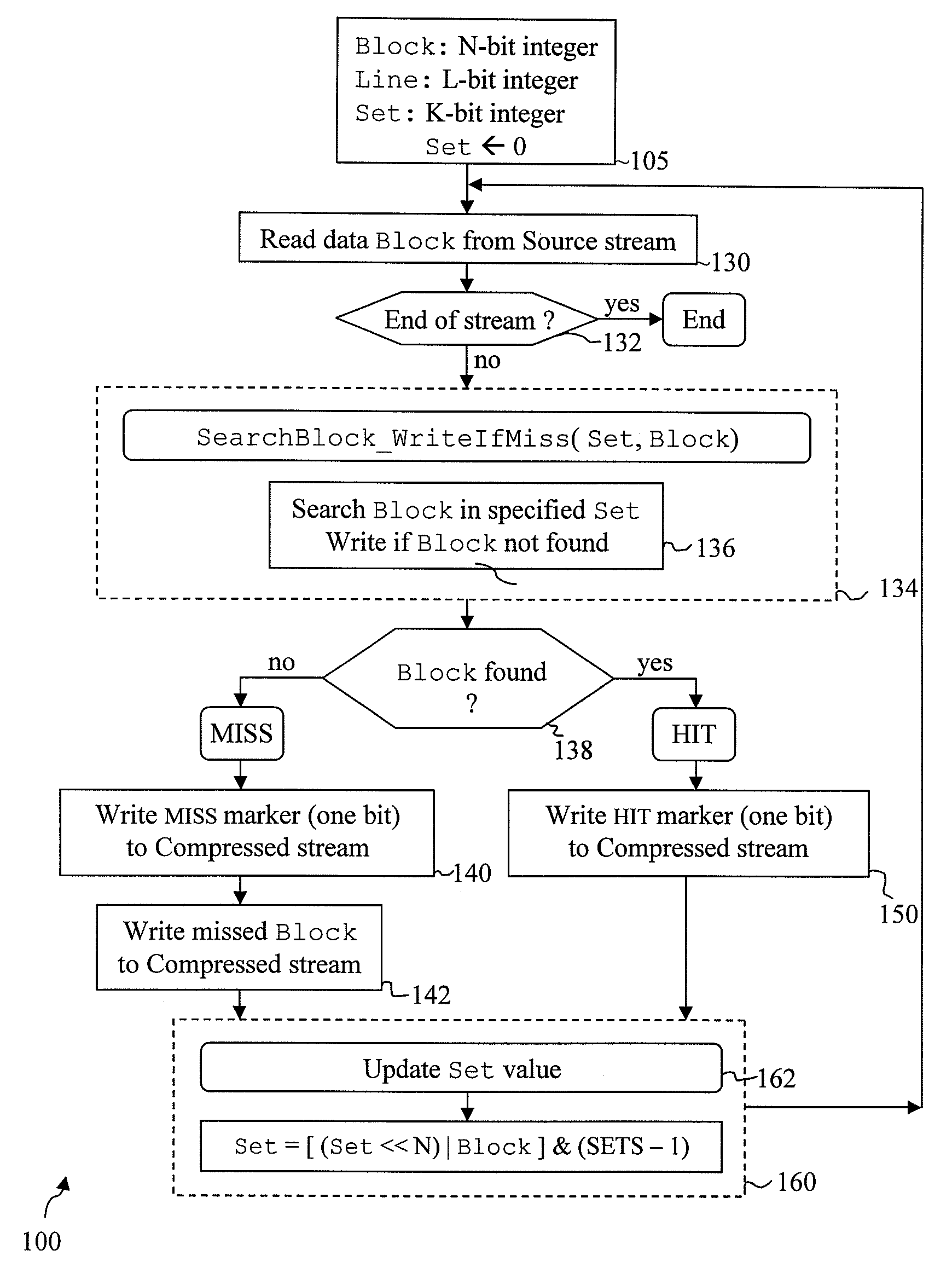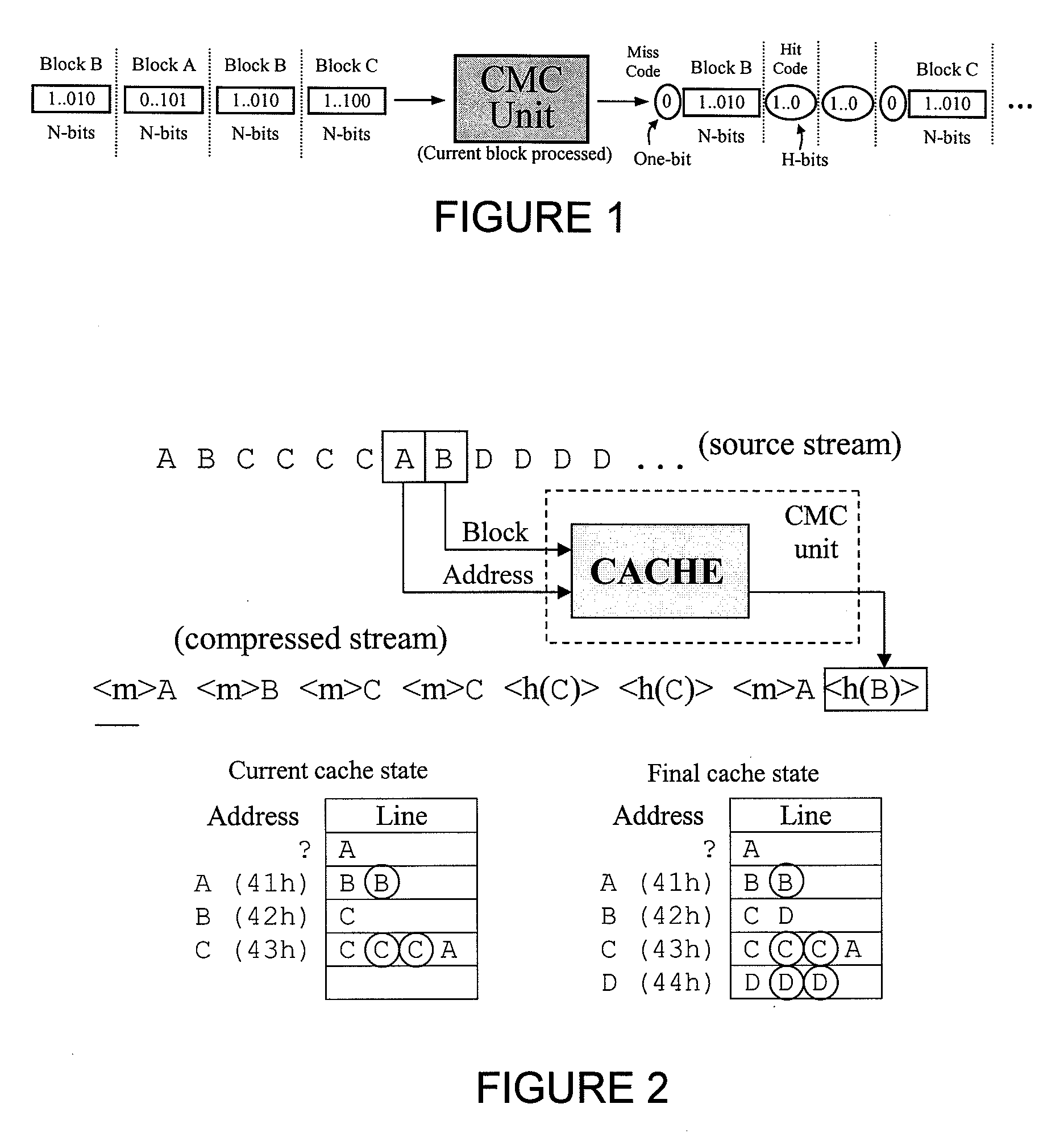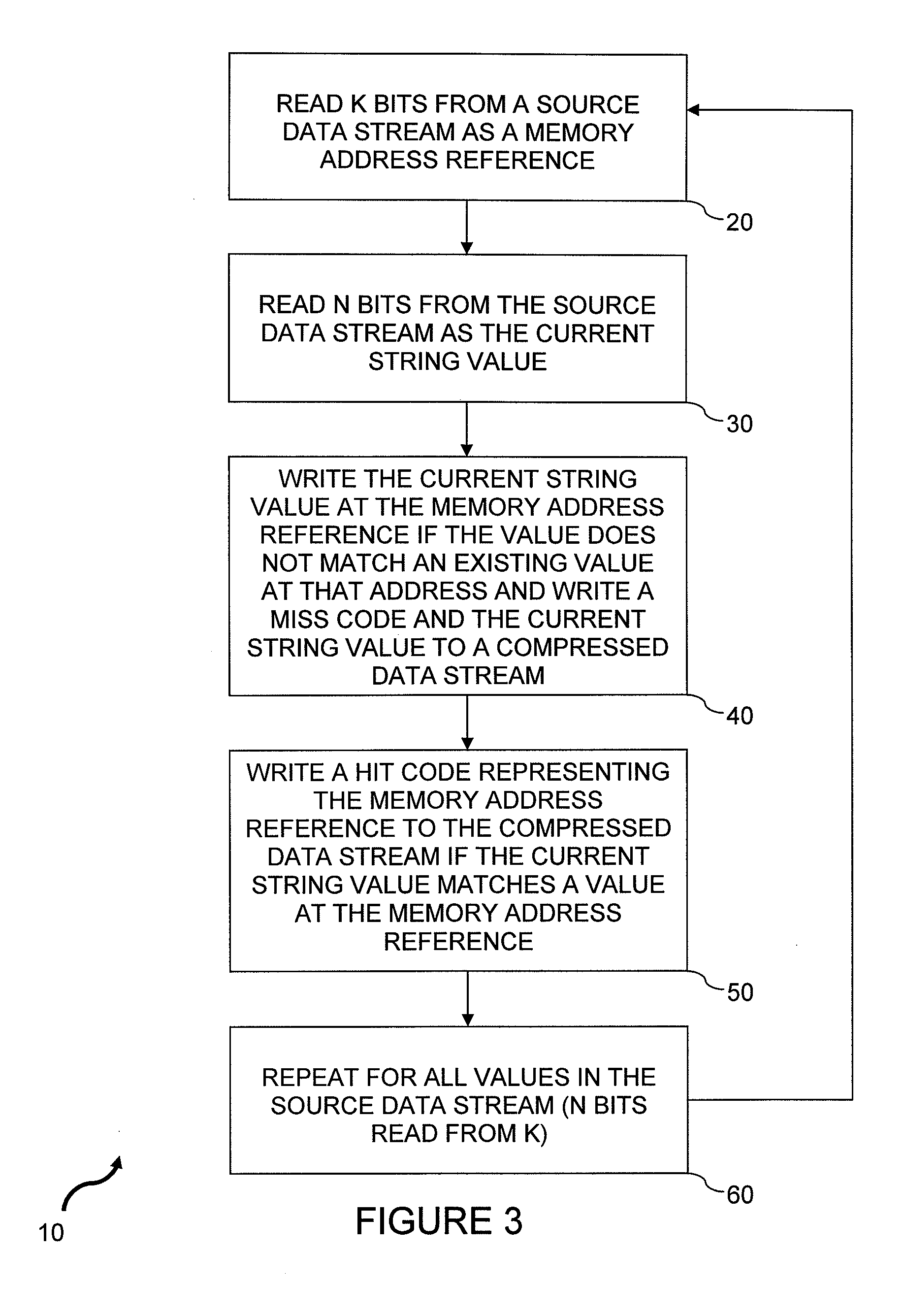[0008]The present invention relates to a method of
data compression and its reverse equivalent,
reconstruction method. The methods feature efficient, high speed, light-weight, real-time, and highly configurable, lossless
data compression, and hence, are suitable for a wide range of applications with various communication requirements. One novel aspect of the present invention is the use of pseudo cache memory as
workspace to produce and reconstruct the compressed data. The cornerstone of the technology is based on a new cache mapping compression (CMC) model which has the intrinsic ability to favor compression speed naturally, as well as the potential to be exploited in hardware due to the inherent parallelism of the compression process. Hence, speed-optimized hardware codec boxes are possible, capable of
processing data streams significantly faster than most state-of-the-art compressors under similar bandwidth conditions. In essence, the visible features of this invention are:
[0011](c) Very high execution speed for both compression and reconstruction methods,
[0014]These characteristics make the method a target for embedded systems, PDAs,
System-an-a-
chip (SOC) designs and other hardware devices with limited
system resources. Moreover, the simplicity of the CMC methods allows for inexpensive hardware or
software implementations. Therefore, this invention has potentially high commercial value for the
wireless, embedded, and
electronics hardware and
software industries.
[0015]As with most prior
data compression methods, the
present method reduces the size of a
source data stream by eliminating redundant, repeated, or repetitively used data, produced by character runs and / or partial string matches, to generate a compressed data stream. The
source data stream comprises a string or sequence of values, namely N bits, to be compressed. The compressed data stream comprises a subset of the
original data stream, along with compression codes (MISS and HIT), which are inserted into the compressed data stream based on the present
compression method, described below. Compression is achieved, in part, by a new and novel method that eliminates redundant, repeated values in the source data stream, and inserting compression codes, MISS or HIT, into the compressed data stream to guide reconstruction of the source data from such compressed stream.
[0017]One of the most notable advantages of the present invention is the ability to compress data in resizable blocks that can be set to be as large as a long string or as small as a
single character, as in the example above. Once the
block size is set, the method has the flexibility to begin the output of the compressed data stream immediately after a single block of input data has been received, and stop and restart such output at any time, and on any
block size. This implies the possibility of resuming the process on
short string boundaries, or
single character boundaries, whenever in time it is needed. These features, taken together, constitute an “exclusive stream” mode of operation, and offer great flexibility to an application by allowing customizing specific compression parameters according to particular data requirements. Exclusive stream mode operation is distinctly different from regular stream mode or block mode. In block mode, a block of data, usually a few kilobytes long, is read and processed by the compressor, after which the compressed data can be output. In regular stream mode the compressor reads characters one at a time, but it will not be able to output any compressed data until an indeterminate number of characters have been processed. This uncertainty can affect the performance of the application, and sometimes make the application impossible under a regular stream or block based compression scheme. The exclusive stream mode of this invention provides the ability to make all communications of the compressed data deterministic in space and time for both string or character boundaries. Additional examples of the use of exclusive stream mode in digital communications and for a chat software application are provided in the detailed description section.
[0041]After the current symbol value is processed using the memory address reference as context, the memory address reference is updated with the previous K bits that were previously output to the uncompressed stream, and the method keeps reading and decoding HIT or MISS code / values until the compressed data stream is completely processed and a complete reconstructed, uncompressed data stream is created. Note that the input operation performed on the uncompressed data stream to read the K bits that will make the memory address reference could be undesirable, or even not possible at all, since the compressed stream is essentially an “output” stream. This input operation on the output stream can be prevented from occurring by performing a shift left operation of N bits from the current symbol value to the memory address reference, which shifts left by N bits as well as a result.
 Login to View More
Login to View More  Login to View More
Login to View More 


